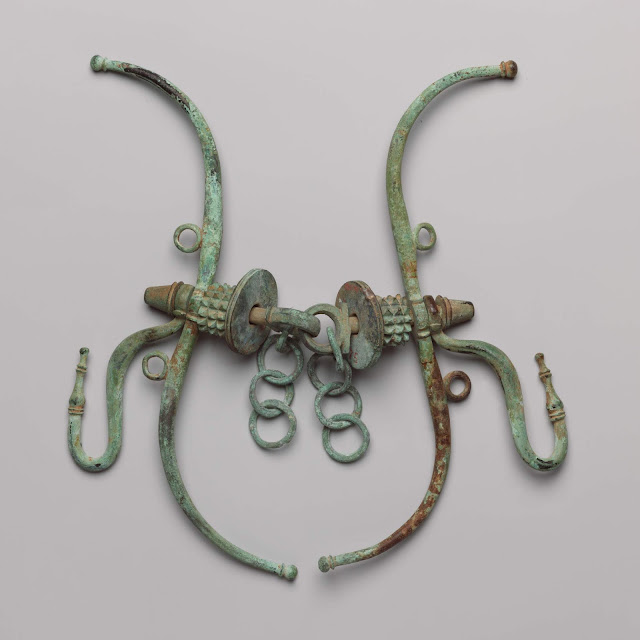The bit that controlled the mighty Bucephalus
There is evidence of the use of bits to control horses, located in two sites of the Botai culture in ancient Kazakhstan, dated about 3500–3000 BCE. Nose rings appear on the equids portrayed on the Standard of Ur, circa 2600–2400 BCE. To date, the earliest known artistic evidence of use of some form of bitless bridle comes in illustrations of Synian (Syrian?) horseman, dated approximately 1400 BCE. Metal bits came into use between 1300 and 1200 BCE, originally made of bronze. The need for control of horses in warfare drove extensive innovation in bit design, producing a variety of prototypes and styles over the centuries.
This bit is of a distinctive type attested in Northern Greece and used for horses that are ridden rather than driven. Its most noteworthy occurrence is on the mount of Alexander of Macedon in the famous Alexander mosaic from the Casa del Fauno in Pompeii and now in the Archaeological Museum, Naples.
This bit is of a distinctive type attested in Northern Greece and used for horses that are ridden rather than driven. Its most noteworthy occurrence is on the mount of Alexander of Macedon in the famous Alexander mosaic from the Casa del Fauno in Pompeii and now in the Archaeological Museum, Naples.
 |
| Bronze bit, Greek, 4th-3rd century BCE at the Metropolitan Museum of Art in New York. |




Comments
Post a Comment